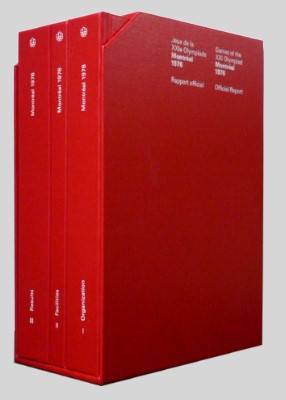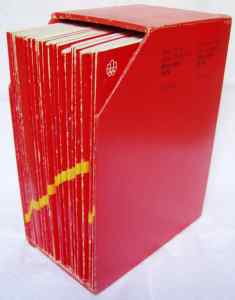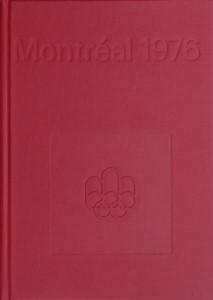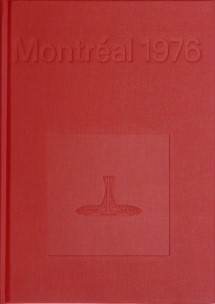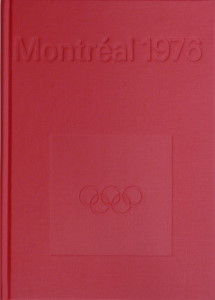The Official Report
In view of the immense proportions the Olympic
Games have assumed, their growing complexity, and the manifold economic
and sociopolitical consequences for sport in general, future generations
have to be provided with a detailed, illustrated report, in order to aid
in their planning, organization, and production.
Indeed, an organizing committee is bound by
the Olympic Rules to prepare such a report within two years of the end
of the Games and to distribute it without charge to certain members of
the Olympic family; but it remains free as regards content and presentation.
In February, 1973 COJO appointed a member of its Communications Directorate
to take charge of the preliminaries regarding the preparation of the report.
His mandate was to determine the concept and content, and, assisted by
a research staff, to gather together all the documents and photographs
necessary for its compilation. For more than three years, the work of that
team progressed: nearly 1,000 files were opened and kept up to date, and
650,000 transparencies were catalogued, 300,000 during the Games themselves.
(The report now completed, those slides have been deposited in the Québec
provincial archives.)
August to October, 1976 were spent in attempting
to have senior COJO personnel complete the one hundred and twenty sectional
reports which would provide the principal source material for the writing
of the body of the report. A directorate with responsibility for both the
official film and the official report was set up in November, 1976, and
it continued to bring pressure to bear to obtain the sectional reports
still lacking.
The COJO board of directors having set the
end of December, 1977, as the deadline for the writing of the official
report, the directorate established a simple, straightforward working plan
to enable it to meet the deadline. The work was divided into two sections
- writing and production - both under the director-general.
The first section comprised a score of employees:
researchers, secretaries, writers, and translators. In view of the writing
deadline, COJO tried to engage as many writers as possible from the ranks
of its former staff. Others hired had a knowledge of the topics assigned
to them, although they had not been on the COJO payroll. Facts were verified
by submitting the texts to an editorial committee comprising past and present
members of COJO's senior staff who made the necessary corrections. To head
production, which would cover the period July, 1977, to June, 1978, COJO
engaged a production manager-artistic director. In the latter capacity,
he was already familiar with COJO's graphic standards, being president
of the firm that produced the souvenir programs for the Games as well as
the results books. He was responsible for soliciting the services of private
companies for the typesetting, graphics and design, photolithography, printing
and binding of the report. Most of the firms approached had already done
some work for COJO.
At the beginning of 1977, COJO began an intensive
enquiry into the distribution of the report. Marketing studies had already
established that the demand for the report outside Olympic circles and
the news media would be quite limited, not only because of the specialized
content of the report but also because of the relatively high cost.
COJO decided to limit the press run to 3,000:
1,600 French and 1,400 English. A certain quantity was set aside for designated
members of the Olympic family and government representatives. And the rest
were sold in order of request to anyone who ordered them from COJO up to
the end of June, 1978. Copies remaining after that date were deposited
with the Canadian Olympic Association. Recommendations The preparation
of the official report would be facilitated by the establishment of a photo
library covering all facets of the organization of the Games. Unfortunately,
the Montréal experience showed that too often there was the tendency
to concentrate on the spectacular side of the Games (athletes in competition,
VIPs, etc.) while neglecting the more modest but still essential elements
required.
Similarly, construction plans should be classified
in a central card index if long and laborious research is to be avoided
in a situation where the bulk of the organizing committee staff is released
two months after the Games. In addition, the official report team sometimes
found it difficult to trace the continuity so necessary in Olympic files.
It is, therefore, recommended that the organizing committee appoint someone
in each of its main spheres of activity to be in charge of a day-to-day
file covering the most important developments. The Games over, those so
delegated would be able to write the various reports which constitute the
basic documentation for the official report. This method would avoid the
loss of considerable time and money.
(Source document: Official Report 1976, Vol. I, page 611)
